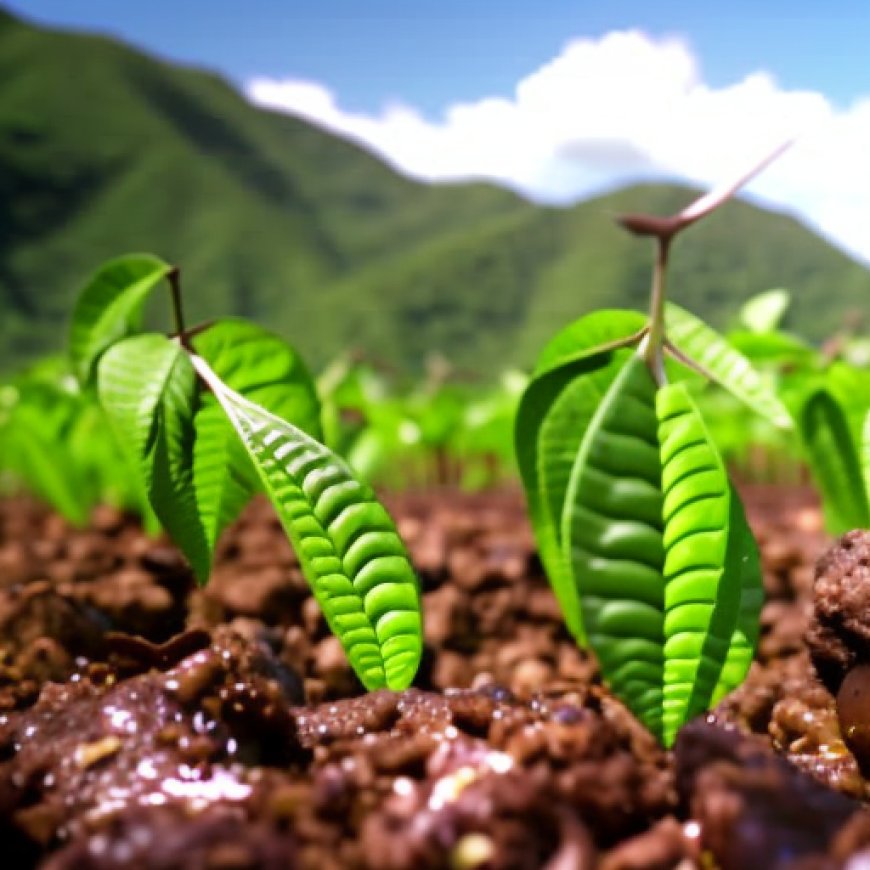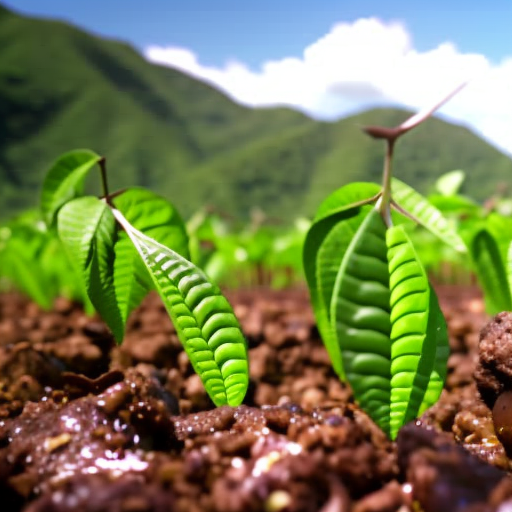CARICOM and IICA confirm alliance and prioritise actions to combat food and nutrition insecurity and improve the climate resilience of agriculture in the Caribbean – Costa Rica
CARICOM and IICA confirm alliance and prioritise actions to combat ... ReliefWeb


The Caribbean Community (CARICOM) and the Inter-American Institute for Cooperation on Agriculture (IICA) prioritize joint actions to strengthen food security and climate resilience in the Caribbean region
The Caribbean Community (CARICOM) and the Inter-American Institute for Cooperation on Agriculture (IICA) have signed an agreement to prioritize their joint actions in the Caribbean region. The aim of this agreement is to strengthen the food and nutrition security of the population and the climate resilience of the agricultural sector.
Background
The agreement was signed during a visit by Carla Barnett, Secretary-General of CARICOM, to the IICA Headquarters in San José, Costa Rica. Barnett met with Manuel Otero, Director General of IICA, which is a hemispheric organization specialized in agriculture and rural development.
Joint Advances
The agreement proposes joint advances in the following areas:
- Policymaking for agricultural and rural development
- Production systems
- Promotion of value chains
- Resilience of the agricultural sector
- Improvement of land use in the Caribbean countries
Carla Barnett stated, “The Caribbean is a valuable pillar for the development of agriculture, and we must work together to improve living conditions in our nations. This requires focus and attention. CARICOM is celebrating 50 years of existence with its eyes open and with the vision of what we must do better, which is to work together with the citizens.”
In this region, most countries are net importers of food and at least seven states import more than 80% of their food. The import food bill in the Caribbean is estimated at USD 6 billion. Barnett acknowledged that the humanitarian situation in Haiti is critical and requires urgent support to address the food and nutritional insecurity of its inhabitants.
Barnett emphasized the importance of incorporating digital technologies in Caribbean agriculture to increase productivity, remove trade barriers, and improve transportation services for agri-food products among the island states of the region.
“We signed this agreement as a renewal of our commitment to work closely with IICA, and to show our appreciation for what we have done together in the past and our desire to move forward,” said Barnett.
Concrete Actions
As immediate agreements of the meeting, the Director General of IICA, Manuel Otero, explained that the Institute will:
- Strengthen capacities for the biofortification of agricultural products in the Caribbean
- Work on a proposal to strengthen the implementation of best agricultural health practices in this region
Otero stated, “Our Observatory of Public Policies for Agrifood Systems is ready to work with CARICOM and offer more robust information for decision-making on regional agriculture. We will also promote stronger ties with international scientific and research centers, since agriculture in the Caribbean and the Americas must be knowledge-intensive to face the major current challenges.”
The meeting also involved directors and managers from IICA’s administrative, project, and technical cooperation areas. They informed the CARICOM Secretary-General about the Institute’s hemispheric initiatives that involve the Caribbean countries, such as promoting alliances for food security and sustainable water management which mobilize collective actions by all the countries of the Americas.
In the Caribbean, IICA has nearly 90 professionals in the agricultural sector. Their work priorities in these nations include the development and strengthening of climate resilience, water management for agriculture, the promotion of intraregional trade, inclusion and empowerment of youth and women, policy formulation, promotion of agrotourism, and the integration of new technologies, among other areas.
CARICOM and IICA recognized the importance of working in an integrated manner on regional initiatives such as the Alliance for the Sustainable Development of Agriculture and the Rural Milieu in the Caribbean, the Special Ministerial Taskforce on Food Production and Food Security, and the Agriculture, Food and Nutrition Cluster. The Caribbean Week of Agriculture, the main event of the agricultural sector in this region, was also highlighted as significant.
SDGs, Targets, and Indicators
1. SDGs Addressed or Connected to the Issues Highlighted in the Article
- SDG 2: Zero Hunger
- SDG 13: Climate Action
- SDG 15: Life on Land
- SDG 17: Partnerships for the Goals
The article discusses the issues of food and nutrition security, climate resilience in the agricultural sector, and the import food bill in the Caribbean. These issues are directly connected to SDG 2 (Zero Hunger), which aims to end hunger, achieve food security and improved nutrition, and promote sustainable agriculture. The article also mentions the need to improve land use, which relates to SDG 15 (Life on Land), which focuses on protecting, restoring, and promoting sustainable use of terrestrial ecosystems. Additionally, the article highlights the importance of partnerships and collaboration, aligning with SDG 17 (Partnerships for the Goals).
2. Specific Targets Based on the Article’s Content
- Target 2.1: By 2030, end hunger and ensure access by all people, in particular the poor and people in vulnerable situations, including infants, to safe, nutritious and sufficient food all year round.
- Target 2.3: By 2030, double the agricultural productivity and incomes of small-scale food producers, in particular women, indigenous peoples, family farmers, pastoralists, and fishers, including through secure and equal access to land, other productive resources and inputs, knowledge, financial services, markets, and opportunities for value addition and non-farm employment.
- Target 2.4: By 2030, ensure sustainable food production systems and implement resilient agricultural practices that increase productivity and production, that help maintain ecosystems, that strengthen capacity for adaptation to climate change, extreme weather, drought, flooding, and other disasters, and that progressively improve land and soil quality.
- Target 17.6: Enhance North-South, South-South, and triangular regional and international cooperation on and access to science, technology, and innovation and enhance knowledge sharing on mutually agreed terms, including through improved coordination among existing mechanisms, in particular at the United Nations level, and through a global technology facilitation mechanism.
The targets identified are directly related to the issues discussed in the article. Target 2.1 focuses on ending hunger and ensuring access to safe and nutritious food, which aligns with the goal of strengthening food and nutrition security in the Caribbean. Target 2.3 emphasizes the need to improve agricultural productivity and incomes of small-scale food producers, which is relevant to the region’s agricultural sector. Target 2.4 highlights the importance of implementing resilient agricultural practices and improving land and soil quality, addressing the climate resilience of the sector. Lastly, Target 17.6 emphasizes the importance of international cooperation and knowledge sharing, which is mentioned in the article as a way to improve agriculture in the Caribbean.
3. Indicators Mentioned or Implied in the Article
- Indicator 2.1.1: Prevalence of undernourishment
- Indicator 2.3.1: Volume of production per labor unit by classes of farming/pastoral/forestry enterprise size
- Indicator 2.4.1: Proportion of agricultural area under productive and sustainable agriculture
- Indicator 17.6.1: Number of science and/or technology cooperation agreements and projects between countries
The article mentions the import food bill in the Caribbean, which implies a prevalence of undernourishment (Indicator 2.1.1). The need to improve agricultural productivity and incomes of small-scale food producers (Target 2.3) suggests the relevance of measuring the volume of production per labor unit (Indicator 2.3.1). The article also highlights the importance of implementing resilient agricultural practices and improving land use, which can be measured by the proportion of agricultural area under productive and sustainable agriculture (Indicator 2.4.1). Lastly, the emphasis on international cooperation and knowledge sharing implies the need to track the number of science and/or technology cooperation agreements and projects between countries (Indicator 17.6.1).
4. Table: SDGs, Targets, and Indicators
| SDGs | Targets | Indicators |
|---|---|---|
| SDG 2: Zero Hunger | Target 2.1: By 2030, end hunger and ensure access by all people, in particular the poor and people in vulnerable situations, including infants, to safe, nutritious and sufficient food all year round. | Indicator 2.1.1: Prevalence of undernourishment |
| SDG 2: Zero Hunger | Target 2.3: By 2030, double the agricultural productivity and incomes of small-scale food producers, in particular women, indigenous peoples, family farmers, pastoralists, and fishers, including through secure and equal access to land, other productive resources and inputs, knowledge, financial services, markets, and opportunities for value addition and non-farm employment. | Indicator 2.3.1: Volume of production per labor unit by classes of farming/pastoral/forestry enterprise size |
| Target 2.4: By 2030, ensure sustainable food production systems and implement resilient agricultural practices that increase productivity and production, that help maintain ecosystems, that strengthen capacity for adaptation to climate change, extreme weather, drought, flooding, and other disasters, and that progressively improve land and soil quality. | Indicator 2.4.1: Proportion of agricultural area under productive and sustainable agriculture | |
| SDG 17: Partnerships for the Goals | Target 17.6: Enhance North-South, South-South, and triangular regional and international cooperation on and access to science, technology, and innovation and enhance knowledge sharing on mutually agreed terms, including through improved coordination among existing mechanisms, in particular at the United Nations level, and through a global technology facilitation mechanism. | Indicator 17.6.1: Number of science and/or technology cooperation agreements and projects between countries |
Behold! This splendid article springs forth from the wellspring of knowledge, shaped by a wondrous proprietary AI technology that delved into a vast ocean of data, illuminating the path towards the Sustainable Development Goals. Remember that all rights are reserved by SDG Investors LLC, empowering us to champion progress together.
Source: reliefweb.int

Join us, as fellow seekers of change, on a transformative journey at https://sdgtalks.ai/welcome, where you can become a member and actively contribute to shaping a brighter future.







